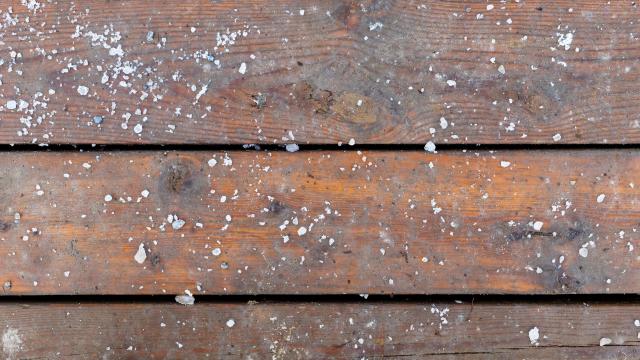Salt is great for dealing with ice outside — but salt is terrible for your floors for the same reason. Even if you’re very much on top of making people remove their shoes when they enter your home, salty dust can still find a way onto your hardwood and other floor surfaces and could lead to permanent damage if you don’t remove it. Here’s what you need to do to get rid of it the right way.
According to SFGate, salt deposits don’t emulsify with soap and water, so don’t waste your time there. What you really need is a weak acid of some kind. You need vinegar.
Before moving on to the vinegar, you first need to get rid of any salt crystals. You can do this by vacuuming or sweeping. You also need to wipe up any melted snow or wetness you spot, so grab an old towel and dab it up. Don’t push it around, as any big crystals inside could scratch the floor and you could even push the water into the cracks in the floorboards, which could result in the damage taking place underneath.
Next, mix vinegar and warm water — a half a cup of vinegar per gallon of water. (If the salty streaks and stains are really bad, you can double the amount of vinegar.)
The way you’ll spread your vinegar-and-water mixture is the same way you’d normally wash your floor, depending on what it’s made of. If it’s tile or vinyl, for instance, you’ll coat it with a mop and leave it there a few minutes to dissolve the salt. If you’re dealing with wood, use a spray bottle to mist the streaks, then dab up the moisture with a towel after a few minutes.
To prevent the streaks from coming back, keep a spray bottle of your mixture handy to tackle salt streaks that pop up. Be vigilant about melting snow, too. Check under your door mat for any leaks, wipe up wetness as soon as it happens, and spray the area with your bottle for good measure.

Leave a Reply
You must be logged in to post a comment.